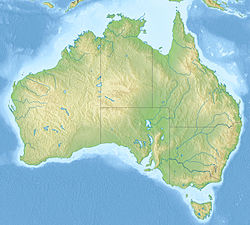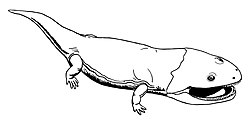Top Qs
Timeline
Chat
Perspective
Arcadia Formation, Australia
Geological formation in Australia From Wikipedia, the free encyclopedia
Remove ads
The Arcadia Formation is a geological formation located within central-eastern Queensland, Australia, which has been dated to between the Induan–Olenekian epoch of the Early-Triassic period. It is most well known for its abundance of Early-Triassic aged fossils, most notably its high diversity of amphibians.[1][2]
Remove ads
Description
The Arcadia Formation is a sequence of sandstones and mudstones deposited as a result of freshwater rivers and lakes during the Induan–Olenekian epoch.[3] The Arcadia Formation represents one of the oldest known Mesozoic formations in Australia, as well as containing relatively well-preserved specimens for its age. At the time at which the Arcadia Formation was building up, the then region of today's Australia was still recovering from the recent Permian–Triassic extinction event which had resulted in the global biodiversity remaining at a low level throughout much of the lower Triassic.[4]
The fauna and flora from the formation are not abruptly unique in comparison to the known fauna or flora from the rest of the world at this time, however the Arcadia Formation has an unusually high diversity of amphibians, with 90% of the fauna from the Arcadia Formation being made up of amphibians. So far, the formation's fauna is known to consist of brachiopods, fish, amphibians, reptiles and synapsids. There is also a high diversity of ichnotaxa based on coprolites.[5]
Remove ads
Vertebrate paleofauna
Fish
Amphibians
Reptiles
Synapsids
Remove ads
References
Wikiwand - on
Seamless Wikipedia browsing. On steroids.
Remove ads







